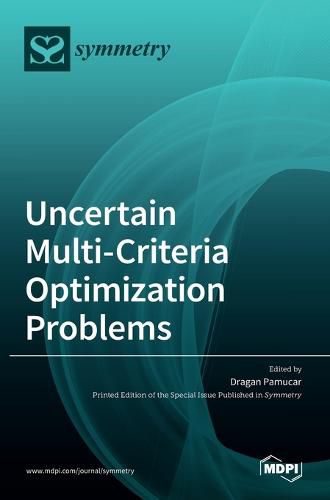Readings Newsletter
Become a Readings Member to make your shopping experience even easier.
Sign in or sign up for free!
You’re not far away from qualifying for FREE standard shipping within Australia
You’ve qualified for FREE standard shipping within Australia
The cart is loading…






This title is printed to order. This book may have been self-published. If so, we cannot guarantee the quality of the content. In the main most books will have gone through the editing process however some may not. We therefore suggest that you be aware of this before ordering this book. If in doubt check either the author or publisher’s details as we are unable to accept any returns unless they are faulty. Please contact us if you have any questions.
Most real-world search and optimization problems naturally involve multiple criteria as objectives. Generally, symmetry, asymmetry, and anti-symmetry are basic characteristics of binary relationships used when modeling optimization problems. Moreover, the notion of symmetry has appeared in many articles about uncertainty theories that are employed in multi-criteria problems. Different solutions may produce trade-offs (conflicting scenarios) among different objectives. A better solution with respect to one objective may compromise other objectives. There are various factors that need to be considered to address the problems in multidisciplinary research, which is critical for the overall sustainability of human development and activity. In this regard, in recent decades, decision-making theory has been the subject of intense research activities due to its wide applications in different areas. The decision-making theory approach has become an important means to provide real-time solutions to uncertainty problems. Theories such as probability theory, fuzzy set theory, type-2 fuzzy set theory, rough set, and uncertainty theory, available in the existing literature, deal with such uncertainties. Nevertheless, the uncertain multi-criteria characteristics in such problems have not yet been explored in depth, and there is much left to be achieved in this direction. Hence, different mathematical models of real-life multi-criteria optimization problems can be developed in various uncertain frameworks with special emphasis on optimization problems.
$9.00 standard shipping within Australia
FREE standard shipping within Australia for orders over $100.00
Express & International shipping calculated at checkout
This title is printed to order. This book may have been self-published. If so, we cannot guarantee the quality of the content. In the main most books will have gone through the editing process however some may not. We therefore suggest that you be aware of this before ordering this book. If in doubt check either the author or publisher’s details as we are unable to accept any returns unless they are faulty. Please contact us if you have any questions.
Most real-world search and optimization problems naturally involve multiple criteria as objectives. Generally, symmetry, asymmetry, and anti-symmetry are basic characteristics of binary relationships used when modeling optimization problems. Moreover, the notion of symmetry has appeared in many articles about uncertainty theories that are employed in multi-criteria problems. Different solutions may produce trade-offs (conflicting scenarios) among different objectives. A better solution with respect to one objective may compromise other objectives. There are various factors that need to be considered to address the problems in multidisciplinary research, which is critical for the overall sustainability of human development and activity. In this regard, in recent decades, decision-making theory has been the subject of intense research activities due to its wide applications in different areas. The decision-making theory approach has become an important means to provide real-time solutions to uncertainty problems. Theories such as probability theory, fuzzy set theory, type-2 fuzzy set theory, rough set, and uncertainty theory, available in the existing literature, deal with such uncertainties. Nevertheless, the uncertain multi-criteria characteristics in such problems have not yet been explored in depth, and there is much left to be achieved in this direction. Hence, different mathematical models of real-life multi-criteria optimization problems can be developed in various uncertain frameworks with special emphasis on optimization problems.